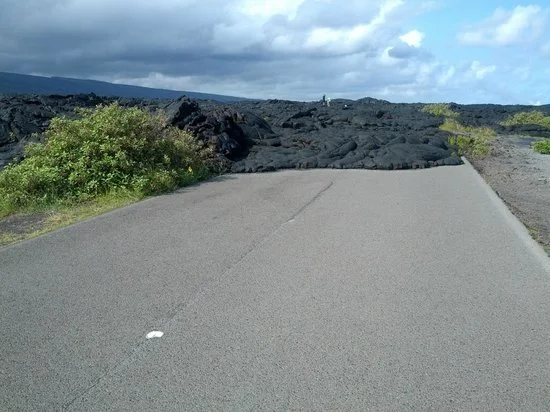What to expect at Hawaii Volcanoes National Park: A guide to lava flows, hiking trails, and ranger programs
Hawai'i Volcanoes National Park is one of the most awe-inspiring places on Earth. Home to two of the world's most active volcanoes, Kīlauea and Mauna Loa, this park offers a unique glimpse into the island’s fiery origins.
Whether you’re a nature lover, geology enthusiast, or adventure seeker, a visit to this park is a must. We recently visited during a Kīlauea eruption and marveled at the lava flow that has covered (and is slowly filling) the crater floor. It’s worth it to check out various interpretive signs and read up on the amazing changes in the park caused by volcanic activities in the last few years.
What makes the park special?

















Hawai'i Volcanoes National Park is not just about lava — it's a place of cultural significance, biodiversity, and ever-changing landscapes. Established in 1916, the park encompasses over 330,000 acres, including lush rainforests, lava tubes, craters, and steaming vents.
Current lava flows: Where to see the action
One of the biggest draws of the park is the chance to witness active lava eruptions and lava flows. However, volcanic activity changes frequently, so it’s important to check with the National Park Service for up-to-date information on eruptions.
Best spots for lava viewing (if active):
Halemaʻumaʻu Crater – Lava lake activity can sometimes be seen at the crater within Kīlauea Caldera.
Chain of Craters Road – If lava is flowing toward the ocean, this is a prime viewing area.
Puʻu ʻŌʻō Vent – Previously a major eruption site, though currently inactive.
Pro tip: Bring binoculars and check the park’s website for safety updates before your visit.
For more information on responsible travel and Hawai‘i’s unique ecosystems, check out:
Hawai‘i Volcanoes National Park: www.nps.gov/havo
Top hiking trails to explore
The park features over 150 miles of hiking trails, ranging from easy walks to challenging backcountry treks. Here are some must-visit trails:
Why visit?
Kīlauea Iki Trail (4 miles) – Hike across a solidified lava lake with steam vents along the way.
Devastation Trail (1 mile) – A short but powerful walk through a landscape reshaped by past eruptions.
Thurston Lava Tube (Nāhuku) – Explore a prehistoric lava cave surrounded by lush rainforest.
Mauna Ulu Trail (2.5 miles) – Offers views of old lava flows and craters from past eruptions.
Ranger-led programs and cultural insights
To truly understand the park’s significance, consider joining a free ranger-led program. These programs offer insight into the park’s geology, Hawaiian culture, and ecosystem.
Popular ranger activities:
Guided hikes to key volcanic sites
Talks on the cultural significance of Pele, the Hawaiian goddess of fire
Nighttime lava viewing sessions (if conditions allow)
Did you know? The Hawaiian Islands were formed by volcanic activity over millions of years, and Kīlauea remains one of the most studied volcanoes in the world.
How to respect the park
Hawai'i Volcanoes National Park is not just a geological wonder — it’s a sacred place. Here’s how you can explore responsibly:
Stay on marked trails to protect delicate ecosystems and yourself.
Never remove lava rocks — it's considered disrespectful and bad luck.
Respect cultural sites, including ancient petroglyphs and heiau (temples).
Follow all safety guidelines, especially near active lava flows and cliffs.
Plan your Big Island adventure
From witnessing volcanic landscapes to hiking through diverse ecosystems, Hawai'i Volcanoes National Park offers an experience like no other.
“Standing on the edge of a volcanic crater, you feel the heartbeat of the Earth beneath your feet — Hawai’i Volcanoes National Park is a living, breathing wonder.”
Why visit?
See centuries-old Hawaiian rock carvings
Learn about early Hawaiian culture and history
Enjoy a scenic and educational walk
Stay in comfort after your adventure
After a day of exploring, unwind at our condo. Enjoy gorgeous views, one of the only heated saltwater pools on the island, a modern renovation, well-stocked amenities, and convenient access to shops, restaurants, and beaches.















